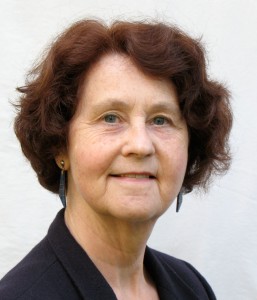
Bio :
June Walker-Wilson is from Yorkshire, England and moved to St Johnʼs in 1982. She completed the Textile Studies Program at the Anna Templeton Centre in St Johnʼs and then obtained her Bachelor of Fine Arts at the Nova Scotia College of Art and Design in Halifax, graduating in 1999.
Juneʼs main area of art practice is oil painting and she has exhibited in solo and group shows in St Johnʼs, Mount Pearl, Gander, Calgary, Alberta and Ayr, Ontario. Her work is in private collections in Canada and the United Kingdom. In August 2012 she opened Ultramarine Fine Art Studio in St Johnʼs, a gallery/studio combination to showcase her work.
June is a member of VANL-CARFAC and Eastern Edge Gallery and has been an Eastern Edge Gallery Board member in the past. Currently she is a member of VANLʼs Fundraising Committee.
When did you first realize you wanted to become an artist?
Being creative in some way, seems to be part of who I am. My father always made things around the home, mainly furniture. Textiles were a part of my early adult life as was photography. I think the desire to be an artist was with me from a young age but life took me in other directions. I seriously considered an arts career after completing the Textile Studies Program at the Anna Templeton Centre in 1996. I could then see that art school and being an artist were possibilities.
What mediums do you work in and why?
After more than ten years of studio practice, I developed a style of low relief oil painting which is a mixed media combination of my three areas of interest: textiles, sculpture and painting. My paintings are literally reaching out to the viewer.
This unique way of working is as much about the process as the finished image. Consequently, I invest a lot of time in preparing the relief surfaces prior to painting.
I have studied drawing, painting and sculpture and worked with acrylics and watercolours. Though my work is a culmination of many experiences, I always return to using oil paints.
How do you get ideas for your artwork?
I am drawn to the unexpected perspective, the overlooked, the unconsidered, the solitary in the natural environment. These are manifest as images of one tree, or one plant, one fungi, or one fish.
Often my art explores those fleeting moments which result in abstract landscapes and water scenes. I wish to share what I see and itʼs most gratifying when others feel a connection with my paintings.
I also experience a restlessness which drives me to experiment and seek new forms of visual expression. Sometimes ideas come from the materials and the art making process itself.
What other artists influence your artwork?
In recent years Iʼve incorporated innovative techniques into my paintings which Iʼve developed without external influences. I like to ask myself “What if I do this…?” and then try something new and see what happens. However I really enjoy Whistlerʼs atmospheric night and River Thames paintings and Iʼve recently discovered the very minimal, spare work of Argentine born Lucio Fontana.
What are the “big” themes in your artwork.
Big Themes, well, the beauty of trees and water are two. They are so essential for life, yet we donʼt treat either very well. I compare trees to people, they all have much the same attributes yet they are all different, each formed by the circumstances of their growth and environment. The solitary state is a recurring theme.
Water is so changeable, reflecting air movement and light. Ice also takes on the qualities of light around it. These are the things that appeal to me.
What is the greatest challenge you face as an artist working in Nfld & Lab?
Here in St Johnʼs I have an open studio space where people can see my paintings in progress as well as the finished pieces. However, gaining exposure beyond St Johnʼs is probably the greatest challenge for most artists working here.
What is the best thing about working as an artist in this province?
I grew up in a large land-locked city, so living by the ocean and being surrounded by the accessible beauty of Newfoundland are two of the best things about being an artist here. There is also a dynamic artistic energy which gives a positive vibration to art making in this province.
Where do you see yourself in 10 years?
Continuing to experiment and make art in Newfoundland. Pushing boundaries in my work even further than I have already. Being a mentor to others who also wish to be independent artists.
If you werenʼt an artist, what would you be doing?
Being an artist is my third career. Iʼd be creating something, somewhere, somehow. There are so many creative things I want to try.
If you could have one wish granted, what would it be?
That everyone who is creative or artistic have the opportunity to fully develop their talents and be recognized for their abilities.
